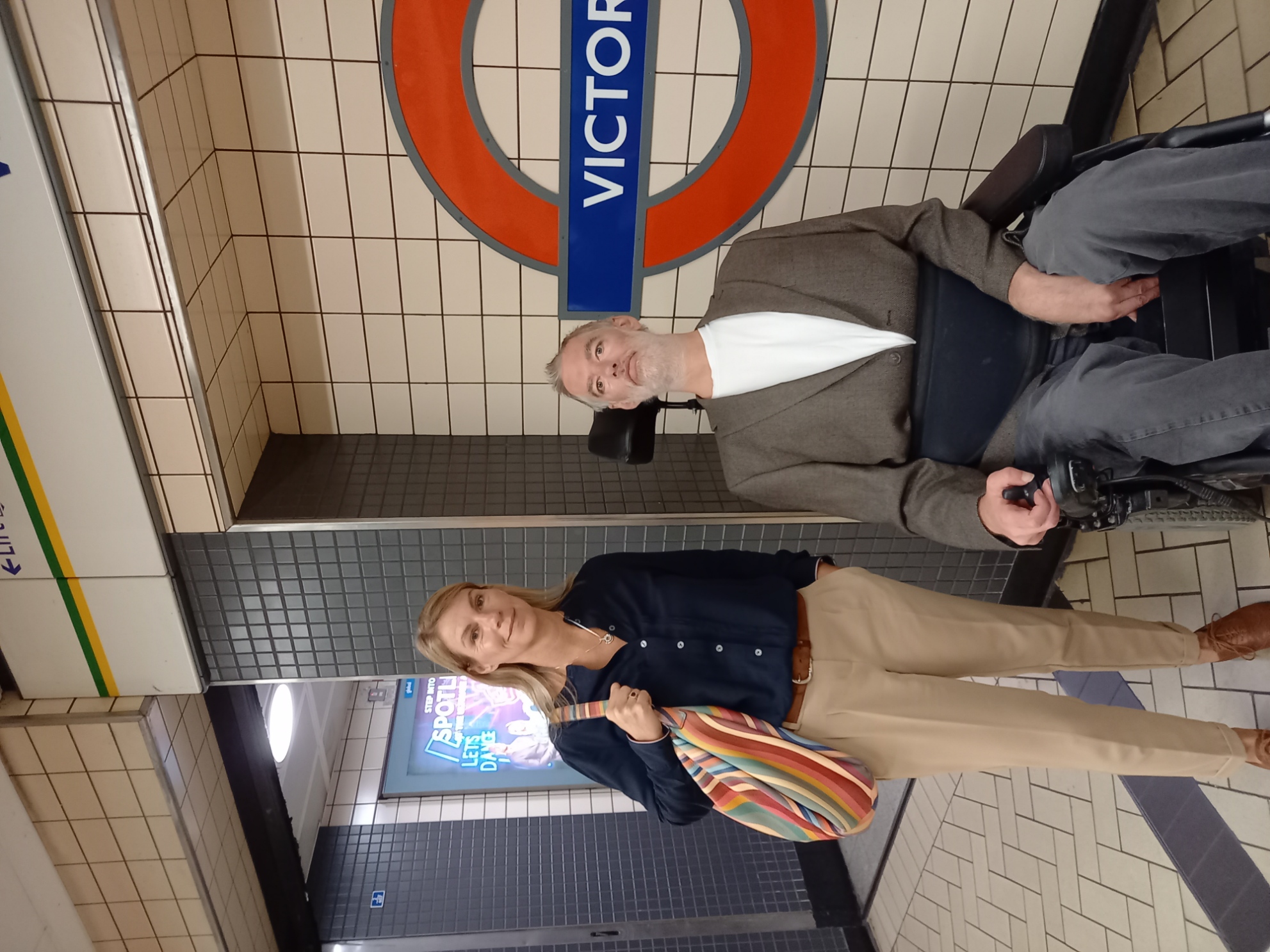Accessibility and inclusion on the railway – lessons learnt and what’s next for industry

Jac Starr, RDG CEO and Transport for All’s Alan Benson
This past weekend, on 3rd December, we celebrated the International Day of Persons with Disabilities which looks to promote an understanding of disability issues and mobilise support for the dignity, rights, and well-being of people with disabilities. I say celebrated because disability is not a negative to be hidden away. Disability can bring unique skills, insights and resilience, as well as pride in an identity that has shaped lives for over 20% of our working age population.
With the end of 2022 fast approaching, this made me look back and reflect on where we are with delivering our vision of an inclusive railway, easy to use and accessible to all.
I’m proud of the improvements we have been able to deliver over the last few years, such as the ‘Passenger Assistance’ app in May 2021, making it easier and quicker for disabled people to request assistance for their train journey, and more recently we welcomed the ‘Passenger Assistance’ web app which provides customers with an additional way to request assistance prior to travelling.
We also successfully implemented reduced booking horizons across the railway network, meaning that since April, customers can request assistance up to two hours before they are scheduled to travel, any time of the day and for any rail journey. This is down from six hours previously, and critically includes the first train of the day.
These are just some of the key milestones, supported by a range of other initiatives that I believe can make a real change for customers, such as the launch of an information card and other aides for people supported by assistance dogs on trains, or the option for ‘Passenger Assistance’ users to rate the service received within the app, thus supporting industry in making further improvements for the future.
While I’m pleased with the steps we are taking towards a more accessible railway, we cannot be complacent.
I always stress that the most important thing to me as RDG’s CEO is to push forward change to influence better customer outcomes for all current and future users of our railways. To do that, and when it comes to meeting the needs of our disabled customers, it is crucial to keep in mind that we work towards delivering a service that works for them – and don’t expect them to adapt to fit into what suits us as providers.
Engaging with our disabled customers is therefore essential to understanding what they require when travelling by train, and that is why I welcomed the opportunity to join Transport for All’s Co-Chair of Trustees Alan Benson MBE for his journey between Farringdon to Clapham Junction via Waterloo and back in September.
Alan is a wheelchair user and was joined by his personal assistant on the day. At the start of our journey, we took some time to take in the surrounds of what was then the newly opened Elizabeth Line. The space, the acoustics, the signage, the lighting, the lack of flashy ad boards staring at you as you travel were all huge benefits and shouldn’t be overlooked as contributors to a better experience for Alan and others. Of course, this is very different from other aspects of the transport network which – by contrast – can make for a more challenging environment. Before our journey together, I hadn’t fully appreciated how some of the softer factors many of us barely notice can make such a difference to Alan and fellow disabled customers. Bold signage, for example, is an extremely useful tool as it allows the customer to look down the platform and identify where they need to place themselves to board easily. It seems simple, but it can really have a huge impact, so something to take onboard when making and implementing plans for our GB stations.
Prior to our journey, Alan had used the ‘Passenger Assistance’ app to request assistance in advance of his journey, but I witnessed him having to go to a booth in Waterloo, find the staff member to help and then head over to the gate where he had been announced to someone else before being navigating to the right boarding spot with a ramp. I’m being intentionally critical as the system worked but I’m conscious that as a wheelchair user, Alan had to allocate extra time by having to adhere to this process.
Alan himself recognised the enhancements that have been made to the ‘Passenger Assist’ working programme but was honest about the need for additional improvements. This is something the industry recognises and the two-year ‘Passenger Assist Phase 4 Roadmap’ has been developed with stakeholder input. This will see additional functions added to the current system over time, including the ability for customers to easily make their own seat reservations, or being able to purchase a ticket and request assistance at the same time – both of which we know are absolute priorities for disabled customers.
My trip with Alan helped me get a glimpse of what works well and what might not. Alan is realistic about the art of the possible in delivering enhancements – particularly in what has and continues to be a very challenging period for the rail industry, but quite rightly, he is not prepared to accept an inferior service.
I have said it before and I will say it again: Only by engaging, listening and acting can we keep making positive change and deliver real improvements that will support our vision of an inclusive, easy to use railway for all.